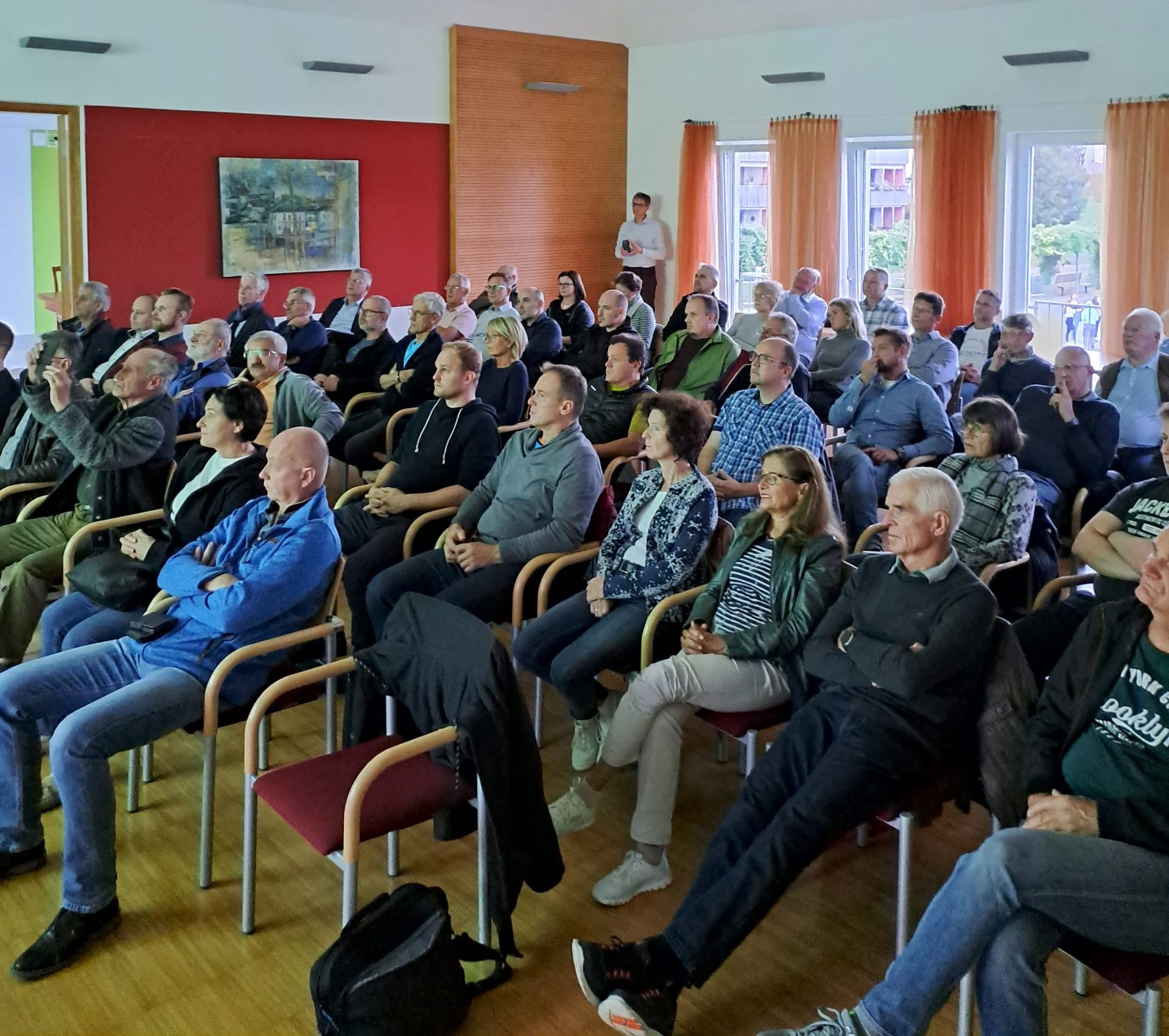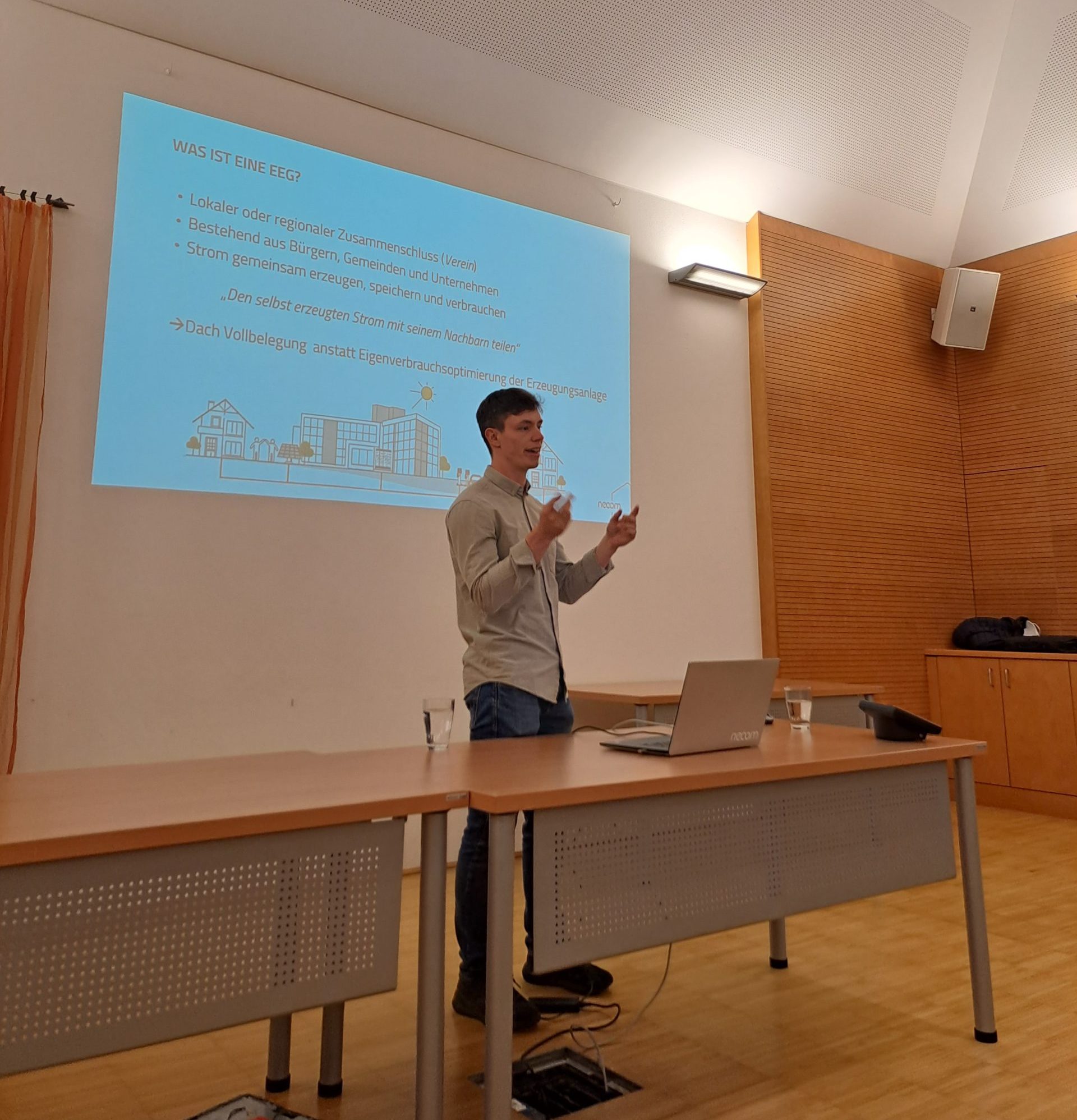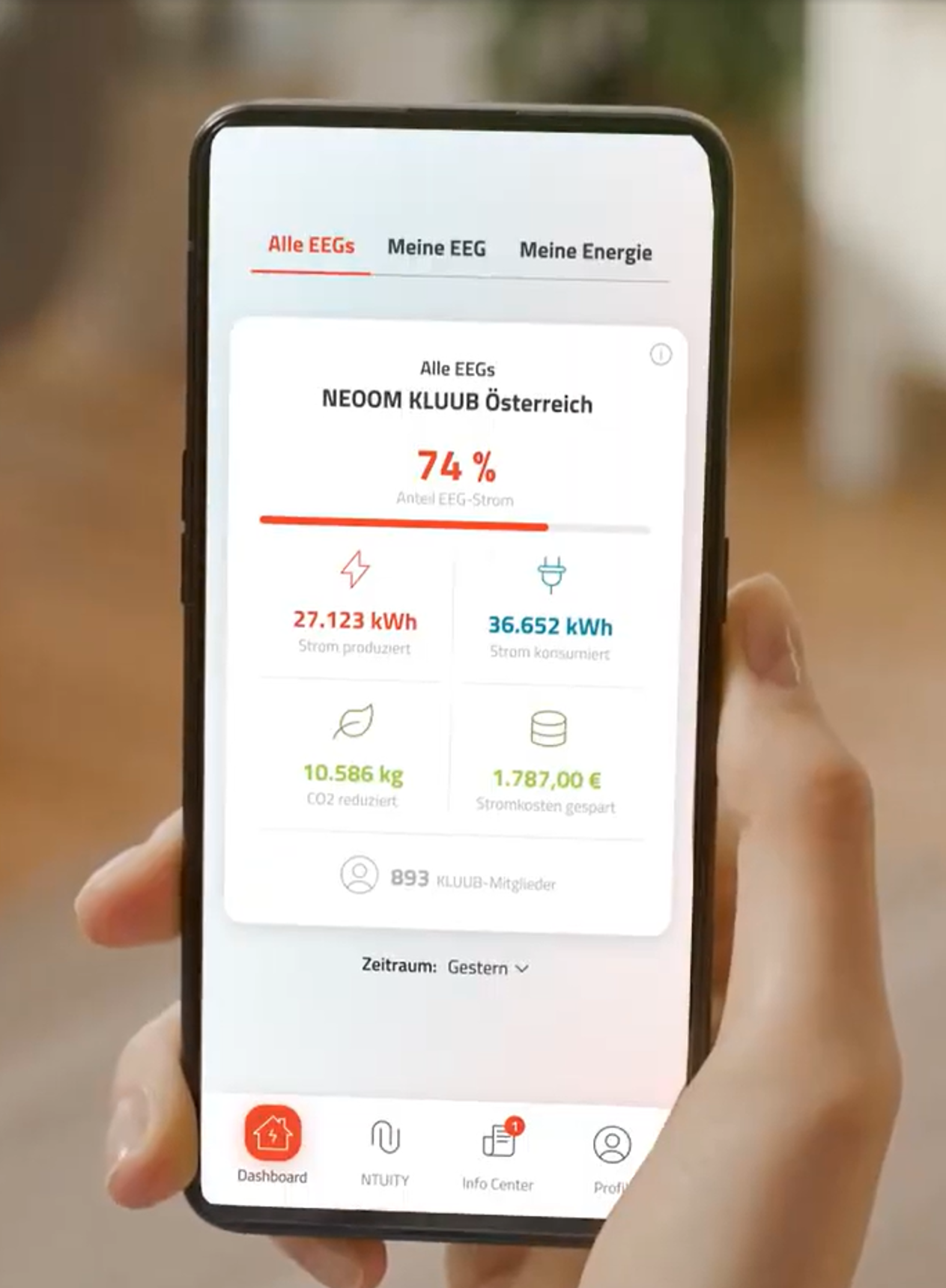Establishing an energy community requires different legal, technical and organisational considerations and skills. For those without a background in energy production, getting started with this process can seem difficult and daunting. How can those interested in producing and using renewable energy be supported? neoom is a Freistadt-based company that offers innovative, clean and integrated decentralised energy solutions and digital products to businesses, individuals and energy communities. Neoom is unique in that it also developed an app that enables users to understand and manage the entire energy system and its components and find and connect with other energy communities and regional consumers and producers of renewable electricity sources.
We spoke to Maximilian Wittman, Product Manager at neoom about the company’s innovative app, how their services are different from consultancies, the main challenges they face working towards clean energy solutions, and his views on the future of energy communities in Austria.
Can you tell us what clean energy services does Neoom offer?
We have comprehensive solutions and products for individuals looking to produce their own electricity. We use the best solanr modules on the market, and give comprehensive advice on PV systems, electricity storage systems, charging solutions and our digital services. We have various software that allows users to easily manage the energy flow in their home, have an overview of all their energy devices such as their heat pump, photovoltaic system and electricity storage, and you can easily access and manage them via the app or via Web.
You helped developed the neoom app that supports energy communities specifically. How did the app come about and what is it used for?
We realised that it is not easy for people to establish energy communities which is quite a young concept. It is only recently that Austria made it legally possible to establish energy communities. We saw a huge need for an application or a platform that makes it easier for people to establish and join energy communities. The concept of our app is that we are not dependent on the geographical location. Everyone who has a smartphone and installed a smart meter at their house can download the app (or access via Web), and with the app, they can be part of an energy community. It is not necessary to use neoom hardware. Currently we are focusing on Austria, we are also planning to go to Germany.
The app connects devices, locations and people. Users can network as regional electricity producers and consumers in a renewable energy community and share their sustainably produced electricity with each other.

With an additional neoom hardware device (neoom BEAAM) you can control energy consumption, energy flows and billing. It optimises the energy production process, displays live data from photovoltaics, electricity storage, charging stations, heat pumps and much more. It connects device manufacturers, system integrators and site administrators in order to simplify their processes, increase the security of the local energy infrastructure and enable sustainable services based on renewable energies.
Can you tell us more about your services for energy communities and your business model?
We offer a package, including everything that is necessary for an energy community to be established. We only receive the fee when the energy community is actually capable of charging for the delivery of energy. We take a percentage of the deliverable energy quantity. That is our business model. At neoom, we have this expertise within our company, so we can offer our competences to the end customer. Thus, we can guarantee that everything within the energy community is solved by us. We do not have this typical form of being involved with only one energy community. Instead, we have this platform.
There are a few other companies targeting the same problem, but there is no company that has this functional app. They all have a different kind of approach, because in most cases, these companies offer consulting. They charge a lot of money, and it goes rapidly up to 20,000 euros per energy community just to get a concept and just to have an analysis of the energy community and what is possible. We do not have this approach, there is no money needed at the beginning, just the app.
What have you identified as the main challenges when it comes to sustaining an energy community?
The most challenging issues are the external factors, the things you cannot control such as legal and regulatory aspects, taxation issues. There are also many different actors. The difficulty is that within this energy demand and supply chain, there is a huge web of actors. There is the energy supplier, there is the grid supplier (grid operator), and then you have many other actors. Some players do not necessarily have a great interest in energy communities, because it would affect their actual business model. So that means that the knowledge and the overview of everything is perhaps also not a hundred percent up to date.

Since it is still a new topic and everything is evolving, it means that the rules and regulations are often changing. So, when we as a company, program certain things in a certain procedure with certain data, that can change very quickly. For the energy community, this means that they have some insecurity because they must adapt to new ways of working in a short time. They must be on the latest information which can be difficult with limited resources and time.
What type of relations does neoom have to public bodies or energy corporations?
Some energy suppliers or energy producers also want to establish energy communities. So, in this case, the relationship could be loosely described as competitive. But it is not that harsh, rather it is stimulating. Institutions are an important partner for us, especially organisations like the Klima- und Energiefonds, because they want to focus on and make the issue of energy communities more attractive for people.
They are funding energy community projects to make this possible for more people. The relationship with them is quite good.. Together with them we can disseminate the concept of energy communities to more and more people. You could say that they are helping us, and we are helping them. In Austria we have these typical programs that in regions you can form a Climate and Energy Region. Within this program, the communities and municipalities are focusing on climate action. These regions want to establish innovative and climate-friendly solutions. For us, they are quite important because with them we can market our product. In general, there is knowledge exchange happening between us, public bodies, and corporations.
The Coordination Office for Energy Communities is developing the concept of energy communities further and making the idea of energy communities more accessible for people. They link the local and suggestions coming from practice with public bodies, including ministries.
Are there current policies or regulations that limit you?
There are some small aspects that are not necessarily limiting us, but they are presenting hurdles we must overcome. However, if you look at how it is now and how it was maybe half a year ago, many things have developed in this period.
As an example, the grid operator has a key role in the technical side of the whole concept of energy communities because the grid operator must give us information where the end user is located in the power grid, and if it is possible to form an energy community there. For example, we have an end user, one house, which wants to be part of an energy community. The user provides us with his metering point designation (a 33-digit number identifying the metering point is shown on the electricity bill). With this information we must obtain information from the network operator. This process is not standardized for every network operator and must therefore usually be carried out manually and in a time-consuming manner.

At the beginning, one year ago, it was such a complicated way to get the information about where this house is located, because you had to write a ton of mails. Now we have a platform for some of the grid operators where you just type in the number of this house or of this device and you get all the information you need. That is just an example of what has been done within the past months or past year. As you can imagine, it was quite a difficulty for us or for any energy community to deal with.
How do you see the current and future roles of energy communities?
Everyone should be able to be part of the energy transition because every citizen is part of climate change. In this way we can make the world a little bit better. That is the reason why the EU implemented the concept of energy communities. I think it is a perfect way to get everyone involved in this topic. However, at the same time, I realise as an expert in this topic it is not so easy for people to form and to establish energy communities. If the process was easier for the end users, it would make a positive impact and the number of energy communities would increase, while reducing dependence on larger energy suppliers. I am a huge fan of this concept, and my hope is that it will establish even more in the future.
When it comes down to the role of energy communities in the future I believe energy communities will have a bigger role than now in the country’s energy production. I have this view that everywhere in Austria there are small energy communities and if you have decentralised energy communities, decentralised energy production and consumption, it can lead to great things. It is not currently taking place, because now we have huge energy suppliers, and we are also dependent on other states. That’s quite a big problem. In the future I hope that energy communities will be established throughout Austria and that these energy communities will bring value to everyone who is participating.
One of the most important aspects of energy communities is that they bring people together again. While it might not be the focus of energy communities because they concentrate on the energy production process, the emphasis of energy communities should always be on the social factors and getting together. Some energy communities are quite focused on the financial part, because the financial advantages can be significant and they’re not really interested in this social aspect.
Hopefully, energy communities will spread throughout Austria and people will get a better understanding of energy: what it is, where it comes from, and how they can manage to consume less energy to fight climate change.

